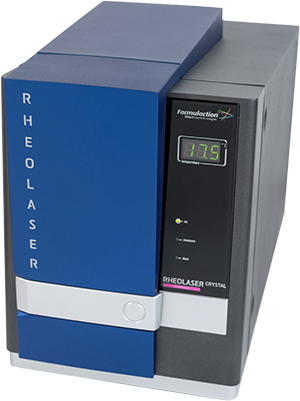Using Turbiscan Technology to optimise particle suspension stability by the Hansen approach25/11/2021 It is crucial across both academia and industry that the properties and lifetimes of products are enhanced by formulating stable particle suspensions. These industries include personal care, pharmaceuticals, agriculture, and energy.
The stabilisation medium is a key factor in avoiding particle agglomeration before expensive additives, such as surfactants and polymers, are added. The Hansen Parameters method has been developed to predict this stabilisation medium, and the aim of this study is to demonstrate that accurate determination of the HP of particles (Titanium Dioxide (TiO2)) can be obtained using Turbiscan Technology. By knowing the HP of particles, it becomes easier to predict greener and cheaper solvents to optimise particle formulation in terms of the content of costly stabilising additives. How does the Turbiscan technology work? Turbiscan technology is based on Static Multiple Light Scattering (SMLS), which involves sending a light source on to a sample in its native state to acquire a backscattered and transmitted signal. By repeating this measurement over time, at a user defined frequency, the Turbiscan monitors the physical stability of a sample without dilution. To compare the stability of different suspensions in a quantitative way, the Turbiscan Stability Index (TSI) can be used. The TSI is a number calculated at a time (t) by summing up all temporal and spatial variations within a considered zone. The higher the TSI value – the more unstable the product. The main advantage of using the Turbiscan technology in the Hansen approach is to discriminate in an accurate way, the tiny stability variations of solvents tested as good dispersion media; which is difficult by conventional observation. Such measurements allow the generation of a Hansen sphere, which is more precise and restrictive than the ones obtained through visual characterization of samples. How was suspension stability evaluated? The TiO2 particles were dispersed using the ultrasonic probe “Sonotrode” in 18 different solvents. Following the dispersion step, the sample was immediately samples, and its stability was measured for 30 minutes at 25 °C in a Turbiscan Tower. To “score” the different solvents, the TSI scale was used in a quantitative manner to measure the stability evolution of suspensions. Each solvent was scored from 4 when a completely unstable suspension is obtained (TSI>10), to 1 for a suspension with a high stability (TSI < 0.5) How were the selected solvents rated as a good or poor stabilisation media? Having measured the TSI values, each solvent can be scored with respect to its ability to stabilize TiO2 particles and, therefore, build the corresponding Hansen sphere. From these values obtained for the TiO2 particles and the HP of other solvents available in literature, it is easy to calculate the Relative Energy Difference (RED) and predict if the selected solvents will be a good or a poor stabilisation media. A classification of the solvent stabilization properties can be also predicted considering that the lower the RED value, the more stabilized the suspension that will be obtained. It is possible to design a mixture of solvents that highlight an even better stability, which will be much closer to the sphere centre. Summary This study with the Turbiscan technology was carried out to quantify and compare the effect of stabilisation media on the stability of different Titanium Dioxide particle suspensions. Through calculation of the TSI, different solvents were tested and classified, making this method suitable for the HP approach for predicting new stabilisation media. This method shows a direct application in predicting better stabilisation media, as well as greener and cheaper solvents to optimise particle formulation in terms of expensive stabilising additives. Since the Turbiscan technology can discriminate the stability and the dispersibility of particles, the HP approach could be also employed to characterize the dispersibility properties of solvents. To find out more about how the Turbiscan Technology can help your work, please call us on: 01442 876777 or email: sales@fullbrook.com. We can offer you a free, no obligation quote, as well as the opportunity to test some samples.
0 Comments
Leave a Reply. |
C HumphreysOctober 2016 Fullbrook Systems Ltd move to new premises in Hemel Hempstead. After being in the same offices for many years the company moved to more suitable premises Archives
February 2023
Categories |

 RSS Feed
RSS Feed